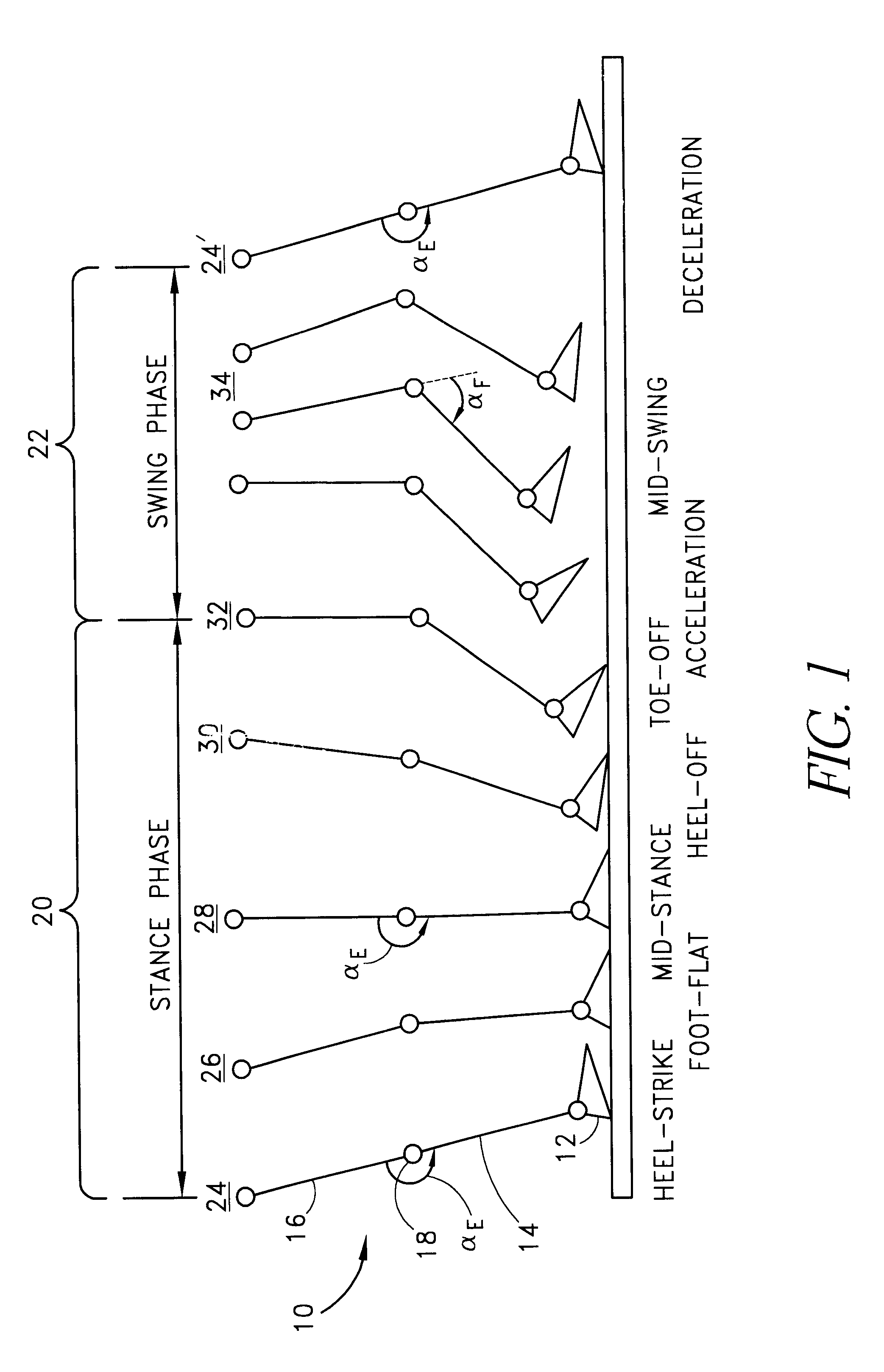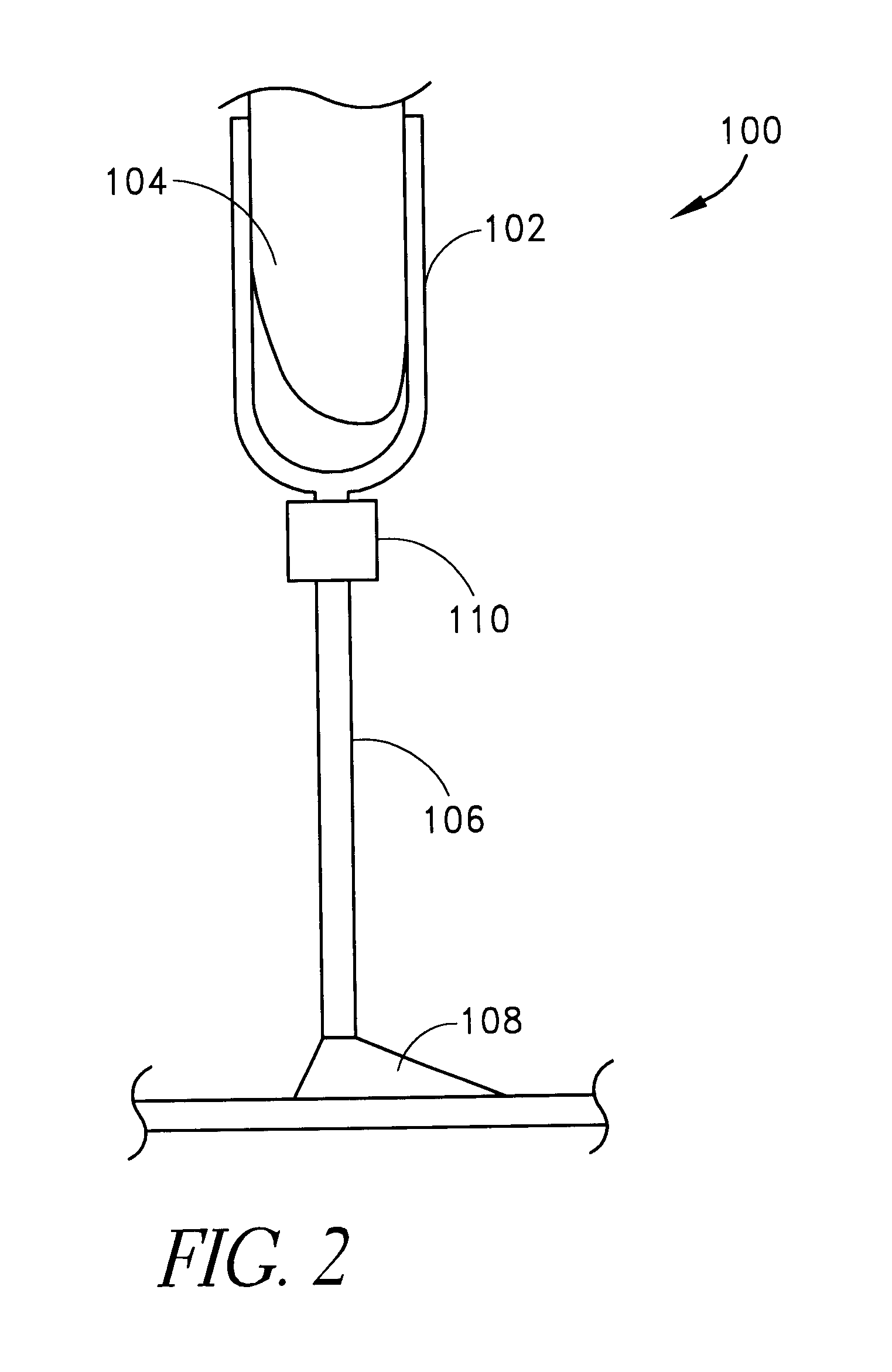Electronically controlled prosthetic knee
a prosthetic knee and electric control technology, applied in the field of prosthetic joints, can solve the problems of unreliable damping performance, difficult control, changing frictional characteristics,
- Summary
- Abstract
- Description
- Claims
- Application Information
AI Technical Summary
Benefits of technology
Problems solved by technology
Method used
Image
Examples
Embodiment Construction
FIGS. 26 to 51 show several preferred embodiments having features and advantages in accordance with the present invention. For purposes of clarity and brevity of disclosure only certain features of these embodiments are discussed below and it is to be understood that other features are obvious from the drawings and / or are embodied in the description of the preferred embodiments as set forth above.
FIGS. 26-28 show one preferred embodiment of a substantially central core 412 of a magnetorheologically actuated prosthetic knee of the present invention. The core 412 preferably comprises a beveled or tapered surface 336 and a shoulder or step 338 at respective ends of respective core portions 452, 454 to facilitate mating engagement or mechanical connection with associated core side plates 416, 418 (shown in FIGS. 29-36). Thus, the core 412 rotates as the side plates 416, 418 rotate.
Preferably, the core 412 comprises an iron-cobalt (FeCo) high magnetic saturation alloy. In one preferred e...
PUM
 Login to View More
Login to View More Abstract
Description
Claims
Application Information
 Login to View More
Login to View More - R&D
- Intellectual Property
- Life Sciences
- Materials
- Tech Scout
- Unparalleled Data Quality
- Higher Quality Content
- 60% Fewer Hallucinations
Browse by: Latest US Patents, China's latest patents, Technical Efficacy Thesaurus, Application Domain, Technology Topic, Popular Technical Reports.
© 2025 PatSnap. All rights reserved.Legal|Privacy policy|Modern Slavery Act Transparency Statement|Sitemap|About US| Contact US: help@patsnap.com



